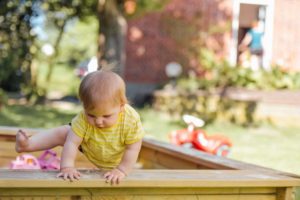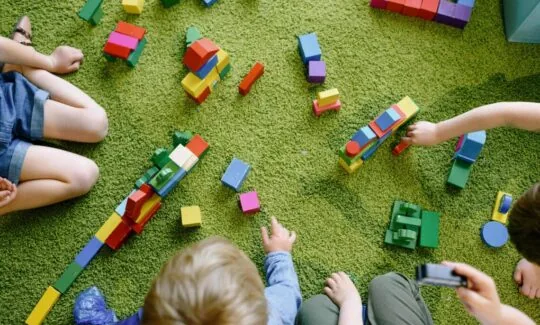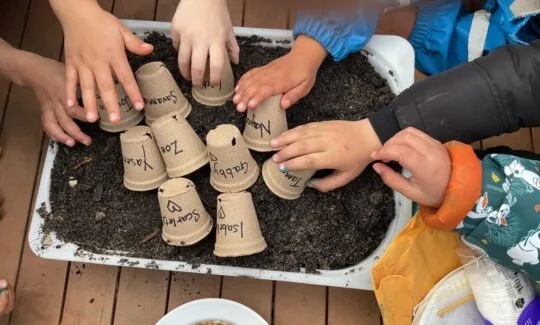How Much Physical Activity Does My Child Really Need?


Being physically active every day is important for the healthy growth and development of infants, toddlers and pre-schoolers. Physical activity for children includes both structured activities and unstructured free play, and can be done either indoors or outdoors.
The National Physical Activity Guidelines provide you with support and guidance in relation to your child’s physical activity, play, sedentary behaviour (inactive time) and screen time. Below are the recommendations and some tips and ideas to help you include more activity in your child’s day.
National Physical Activity Guidelines
Infants: Birth to 1 year

For healthy development in infants, physical activity should be encouraged from birth. Before infants begin to crawl, physical activity includes reaching and grasping, pulling and pushing, moving their head, body and limbs during daily routines, and supervised floor-based play. Once your infant is mobile, encourage them to be more active in a safe, supervised and nurturing play environment.
Tips and ideas:
- Choose ‘active’ toys such as boxes, pots, pans, streamers, hoops and toys that encourage reaching, stretching, crawling and moving.
- Encourage reaching and grasping by placing toys just out of reach.
- Play push and pull games with balls and soft toys.
- Play music to encourage playful movements.
- Encourage movement and play during bath time.
Toddlers (1 to 3 years) & Pre-schoolers (3 to 5 years)
Toddlers and pre-schoolers should be physically active every day for at least three hours, spread throughout the day. Physical activity can be accumulated throughout the day and can include light activity like standing up, moving around and playing.
Tips and ideas:
- Play active games such as hide-and-seek, obstacle courses, follow the leader, or tag games.
- Move to music or try action songs like ‘Ring-A-Rosie’ or ‘Head-Shoulders-Knees and Toes’.
- Use active modes of transport such as walking or scooting, rather than driving or using the stroller.
- Choose toys and play materials that encourage movement such as balls, hoops, bikes and kites.
Sedentary Behaviour Guidelines for all children aged 0 – 5
‘Sedentary behaviour’ refers to time spent being physically inactive. Infants, toddlers and pre-schoolers should not be sedentary, restrained, or kept inactive, for more than one hour at a time, with the exception of sleeping. This may include sitting in strollers, highchairs, car seats or being swaddled without free movement.
Tips and ideas:
- Take breaks on long car trips – stop at a park or rest area to stretch your legs.
- Take breaks from the stroller and let your children walk for some of the journey.
- Try walking, riding a bike or using a scooter for short trips.
- Allow babies to move freely without being swaddled all day long. While swaddling for sleep is encouraged, babies also need time to move freely during the day in order to strengthen their muscles and develop their gross motor skills.
Screen Time Guidelines
Children birth – 2 years
Screen time is not recommended for children under 2 years. When sedentary, engaging in pursuits such as reading, singing, puzzles and storytelling with a caregiver is encouraged.
Children 2 – 5 years
For children 2 to 5 years of age, sedentary screen time such as watching television and the use of other electronic media (ipads, computer and other electronic games) should be limited to less than one hour per day. When sedentary, engaging in pursuits such as reading, singing, puzzles and storytelling with a caregiver is encouraged.
Tips and ideas for reducing screen time:
- Make meal times your family time and turn off electronics and TV.
- Allow your children to choose one program to watch, and turn the TV off after the program has finished.
- Set limits and rules around screen time, and communicate this with your children.
- Make your children’s bedrooms TV and computer free zones.
- Play music or make use of audio stories instead.
Learn more about our unique Grow Curriculum which includes our exclusive daily Active Program. Plus, read more from our Active Program Manager: Ditching The Pram For The Scooter.
Only About Children can help your child to grow, make friends and explore the world.
Only About Children can help your child to grow, make friends and explore the world.
Related Reads


Every Conversation Matters: Turning Safety Talk into Action with Bunji
This National Child Protection Week, Bunji is helping children turn conversations about safety and wellbeing into real-life actions. From helmets and seatbelts to eye health and body safety, children are learning safe habits in fun, engaging ways, showing that every conversation about safety truly matters.

The Head and the Heart of Early Childhood Education
Quality education and strong operations aren’t opposites. Together, they create the foundation for children, families and educators to thrive.
